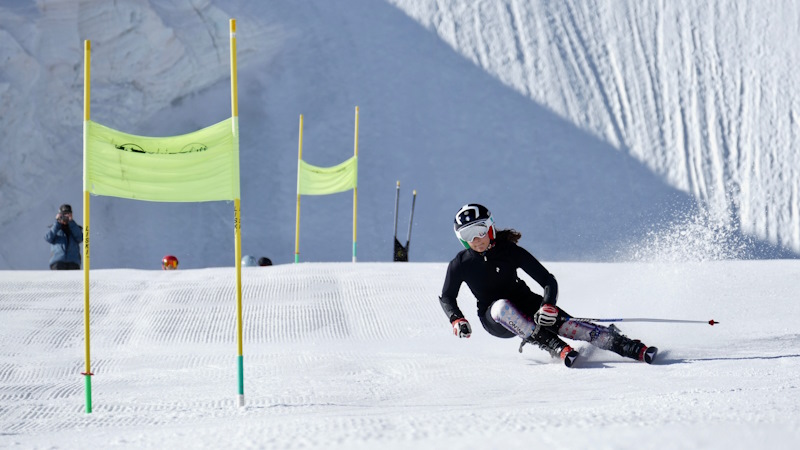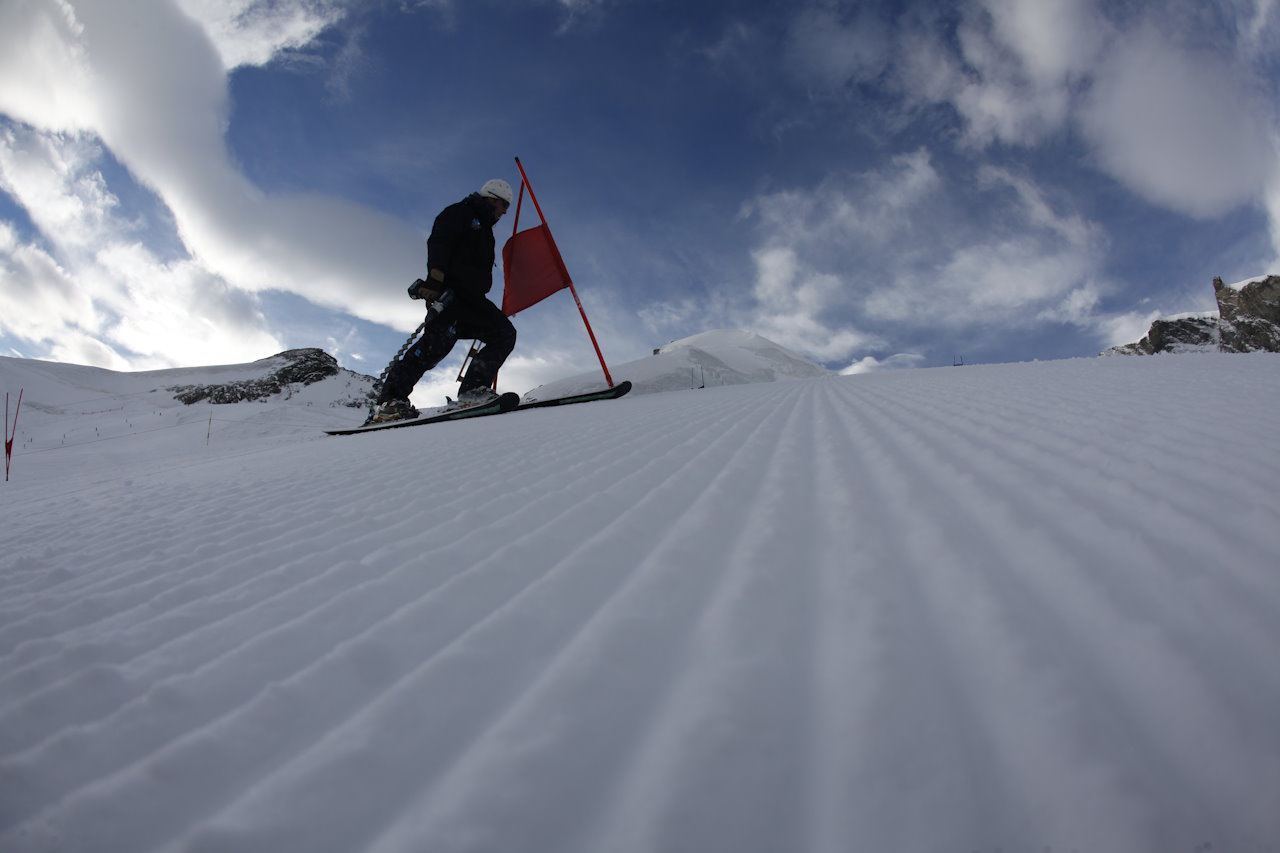At Ski Zenit, we’re passionate about backcountry skiing, and this time, we want to take you on a journey through some of North America’s best ski touring destinations. From the legendary powder of Utah’s Wasatch Mountains to the rugged beauty of Wyoming’s Teton Pass, these backcountry gems offer unforgettable experiences for every kind of adventurer.
But before you set out, understanding snow conditions is key to making the most of your trip. We’ll dive into the science behind different snow types, explore the weather patterns that shape the ‘Greatest Snow on Earth,’ and share essential gear and safety tips to help you navigate these pristine terrains.
Whether you’re chasing deep powder, scenic routes, or challenging ascents, North America’s backcountry has something for every ski touring enthusiast. Let’s get started!
Content
Best ski resorts for ski touring in North America
Exploring the Wasatch Mountains, Utah
The Wasatch Mountains, situated conveniently around Salt Lake City, are renowned for their resorts such as Park City, Alta, and Snowbird. Beyond these developed areas lies a treasure trove of backcountry skiing opportunities. The famous Utah Interconnect, a 25-mile route, is a significant highlight linking several major ski areas, creating an extensive playground for ski touring enthusiasts.
The accessibility of these backcountry spots is one of the key attractions. Skiers can effortlessly transition from urban settings to snow-covered wilderness within a short drive. But what makes the Wasatch truly stand out? Is it the powdery snow or the striking alpine landscape?
For those seeking a blend of adventure and convenience, the Wasatch region offers both. The packed snow is typically more stable than other regions, making it an ideal choice for both novice and experienced skiers seeking new challenges.
- Park City: A popular resort town with extensive backcountry options just a stone’s throw away.
- Alta and Snowbird: Known for their deep powder and challenging terrain, yet surrounded by exploratory routes.
- Deer Valley: Part of the Utah Interconnect, offering diverse terrains for skiers to explore.
One might wonder about the significance of the Utah Interconnect. It serves as a great introduction to the area’s backcountry while highlighting the interconnectedness of these ski resorts.
With varied terrain and plenty of accessible routes, the Wasatch Mountains are a must-visit for ski enthusiasts eager to explore the essence of Utah’s backcountry.
Teton Pass, Wyoming: a ski tourer’s dream
Jackson Hole is undoubtedly a hotspot for ski enthusiasts around the globe, and Teton Pass adds another layer of charm and adventure to Wyoming’s skiing repertoire. It is often dubbed as the “gateway to paradise” for ski tourers seeking uncharted paths and challenging terrains.
What makes Teton Pass so appealing? Its rugged beauty combined with its reputation as a filming location for iconic ski movies speaks volumes about its allure. The challenging terrains, coupled with breathtaking sceneries, draw adventurers looking for something beyond the ordinary.
- Jackson Hole: A renowned location drawing crowds year-round, with vast backcountry options in Teton Pass.
- Grand Targhee: Wyoming’s hidden gem, providing unique ski touring experiences with less crowd.
Another advantage of Teton Pass is its accessibility. Skiers can reach this stunning destination without extensive travel, making it a convenient option for both weekend warriors and those on extended adventures.
The presence of Teton Gravity Research nearby further cements Teton Pass’s reputation as a premier ski destination. The thrill of exploring these slopes is akin to tracing the steps of professional skiers who have graced this region.
For those yearning for an authentic and exhilarating backcountry experience, Teton Pass offers a perfect blend of challenge and beauty.
Colorado’s backcountry gems
Colorado is a haven for ski enthusiasts, boasting a plethora of backcountry touring spots that captivate adventurers from across the globe. With a staggering 71,000 acres of State Forest State Park and vast federally maintained wilderness, the options are as expansive as they are enticing.
You might be wondering—what sets Colorado apart from the rest? The diversity of its landscapes, from the towering peaks of Rocky Mountain National Park to the rugged terrain of the San Juan Mountains, offers something for every skier. Every spot in Colorado feels like a hidden gem, waiting to be discovered by those with a passion for exploration.
- Aspen and Crested Butte: Renowned for their scenic routes and exceptional skiing conditions.
- San Juan Mountains: Famous for hut tours and unparalleled beauty near Telluride and Silverton.
- Summit/Eagle County: Includes Vail, Breckenridge, and Copper Mountain, offering diverse backcountry skiing experiences.
The availability of numerous backcountry access gates from resorts allows skiers to dive into solitude swiftly, leaving the bustle of developed areas behind. However, with great adventure comes significant responsibility. Colorado’s avalanche history underscores the importance of caution and preparation for those venturing out.
Colorado’s backcountry is both a paradise and a proving ground for skiers, demanding respect and offering unparalleled rewards for those prepared to take on its pristine landscapes.
Venturing into Montana’s remote ranges
Montana is a land of vast, untamed landscapes that beckon adventurers with its remote ranges and untouched beauty. Skiers exploring Montana’s backcountry can expect a unique experience characterized by solitude and raw nature.
But what draws ski enthusiasts to Montana’s remote ranges? The sheer variety and isolation of its over 60 mountain ranges offer a sense of adventure that few places can match. Whether it’s the Bridger Range near Bozeman or the rugged terrains around Cooke City, Montana provides a sanctuary for those seeking peace in the wilderness.
- Bridger Range: A popular spot offering breathtaking views and thrilling descents.
- Cooke City: Known for its challenging terrain and pristine snow conditions.
- Glacier National Park: A beautiful park offering wilderness backcountry touring away from crowded resorts.
Montana’s backcountry skiing is defined by its remoteness, presenting opportunities for exploration that feel like stepping back in time. This vastness also means reduced crowds, providing an unparalleled sense of freedom.
For those seeking an escape from the hustle and bustle, Montana’s remote ranges offer a chance to connect with nature and oneself. It’s about experiencing skiing in its most elemental form – unspoiled, raw, and magnificently liberating.
The different snow types and how they affect your ride

Understanding snow: from fresh powder to hardpack
Understanding snow types is essential for anyone exploring the mountains. Snow forms in various ways, each affecting how we ski or snowboard. The difference between powder and packed snow is significant. Powder, highly sought after by enthusiasts, is light and soft, allowing for a smooth, effortless glide. In contrast, packed snow is denser and more predictable, making it ideal for beginners.
Several factors influence these snow types. Temperature, humidity, and wind play a crucial role in determining snow quality. Cold, dry conditions produce lighter snow, while warmer, wetter weather results in heavier, denser layers. The interplay of these elements determines whether the surface is light and airy or firm and compact.
- Temperature: Lower temperatures create lighter snow by reducing water content.
- Humidity: High humidity condenses snowflakes, increasing their density.
- Wind: Strong winds can compact snow, altering its texture and skiability.
Snow also undergoes continuous changes after it settles. It melts, refreezes, and sublimates, modifying its characteristics over time. These transformations are especially important to consider in avalanche-prone areas, as shifting snow layers can create unstable conditions.
Understanding these processes helps in predicting conditions for ski touring. Being aware that fresh powder can transition into hardpack provides valuable insight for planning safe and enjoyable backcountry adventures.
The Wasatch Mountains: home to the ‘greatest snow on earth’
The Wasatch Mountains in Utah have long been celebrated for their exceptional snow. How does this range maintain such a reputation? It’s not just about the quantity, although the Wasatch receives impressive snowfall annually. The key lies in the quality of the snow.
Thanks to the lake effect from the nearby Great Salt Lake, snow here is often lighter and fluffier. The geographical features of the area enhance this effect, creating an environment perfect for generating snowfall with low water content.
Imagine skiing on a cloud—this is what the Wasatch offers. But why is this important? For skiers and snowboarders, lighter snow translates to easier turns and less fatigue. This low-density snow can make a six-inch snowfall feel like a foot, offering an effortless skiing experience.
- Lake effect: This phenomenon contributes to increased snowfall by drawing moisture from the lake.
- Low-density snow: The result is a powder that’s light and easy to navigate.
- Ideal conditions: Combined with steep terrains, it offers exhilarating ski runs.
The Wasatch’s reputation isn’t just hype; it’s science. The unique combination of natural elements results in conditions that many argue offer the best skiing experience in the world.
Tips for finding the best snow
Finding quality snow requires careful planning and observation. Using local weather reports and avalanche forecasts is essential, as they provide key details on ski conditions and potential hazards.
Key factors to consider:
- Check weather and avalanche reports: These offer crucial updates on snow conditions and risks.
- Observe local conditions: Snow texture, temperature, and wind patterns help determine snow quality.
- Choose the right time: Morning skiing often provides the best conditions before the sun alters the snow.
Additionally, connecting with the local skiing community can provide valuable firsthand insights. Experienced skiers often share information about the best spots and ideal times to visit. A combination of research, awareness, and experience leads to better skiing conditions.
Access and logistics for backcountry ski touring
Essential gear and preparation
Planning a backcountry ski tour requires more than just enthusiasm. Proper gear is essential to navigate the challenging terrains safely. Lightweight ski boots like those from Garmont, Dynafit, and Scarpa offer comfort during long ascents, while heavier boots provide better control for skiing. Women-specific models are available to ensure a snug fit.
Your skis should be equipped with AT or Telemark bindings, which are designed for off-piste adventures. Fixing your own skins to the skis is a task you’ll often perform, so familiarity with this equipment is vital. Renting equipment at resorts is an option, but bringing your own is highly recommended for a seamless experience.
- Randonnee boots: These are known for their lightweight design, enhancing comfort during long climbs.
- Telemark Gear: Ensure your boot crampons fit, as they’re crucial for steep icy sections.
What about avalanche safety gear? It’s crucial to include a beacon, shovel, and probe in your pack. These tools are non-negotiable for self-rescue and aiding others in emergencies. Taking courses on avalanche safety boosts your confidence and skills.
Safety tips for backcountry skiing
Safety in the backcountry is paramount, and understanding the risks associated with backcountry skiing is crucial. Avalanche danger is a significant concern; thus, familiarizing yourself with local avalanche advisories is non-negotiable.
Courses in first aid and avalanche rescue enhance your ability to respond to emergencies. Is it wise to venture out alone? It’s safer to ski in groups. A reliable communication plan ensures that someone knows your whereabouts at all times.
In addition to physical safety, environmental considerations play a role. Respect protected areas and practice Leave No Trace principles to preserve the natural beauty for future adventurers.
Encountering the unexpected can be daunting. But with preparation and knowledge, you can face challenges with confidence and enjoy the pristine wilderness.
Planning your ski touring itinerary
When planning your ski tour, creating a detailed itinerary is essential. Consider the length of the trip and the skills required for the chosen routes. Are there simpler climbs for beginners, or more advanced paths for the seasoned skier?
Accessing local resources, such as guide services or ski schools, can provide itineraries tailored to different skill levels. How many days do you plan to spend? Balancing ski days with rest days can enhance the overall experience.
Incorporate flexibility into your schedule to adapt to changing conditions. Are there cultural or natural highlights you wish to explore along the way? The backcountry offers myriad opportunities to blend skiing with other outdoor adventures.
Your itinerary is your roadmap. With careful consideration and local input, you can devise a plan that ensures an enriching and safe backcountry ski touring experience.
A global perspective: Ski touring destinations beyond North America
Exploring Japan’s powder paradise
We might imagine gliding through soft, powdery snow, an experience that Japan offers in abundance. Japan’s ski resorts, particularly in regions like Hokkaido and Nagano, are renowned for their consistent and deep snowfalls. The powder here is light and fluffy, earning it the nickname “Japow.”
For ski enthusiasts, the allure of Japan goes beyond just the snow. Picture yourself nestled in traditional onsens (hot springs) after a long day on the slopes. These rest stops not only provide relaxation but also a cultural experience unique to Japan.
- Hokkaido: Famous for its consistent snowfall and diverse ski areas.
- Nagano: Offers a blend of historic temples and modern ski resorts.
- Tohoku: Known for lesser-known slopes and fewer crowds, perfect for those seeking tranquility.
Japanese ski resorts also provide a unique blend of cultural richness and modern amenities, making them a compelling choice for international travelers. How does one resist the blend of breathtaking landscapes and the promise of fresh, untouched powder?
Canada’s untouched backcountry
Many ski enthusiasts seek Canada’s vast wilderness for unmatched backcountry adventures. The country offers expansive and rugged ski touring terrains, particularly in British Columbia and Alberta.
- British Columbia: Home to legendary backcountry areas like the Columbia Mountains, featuring challenging routes.
- Alberta: Access to iconic locations such as Banff and Jasper, with breathtaking scenery.
- Yukon: A remote option for those pursuing solitude and adventure.
The appeal of Canadian backcountry touring lies in its sheer scale and diverse landscapes—glacial valleys, snow-capped peaks, and untouched wilderness. The freedom of these open spaces is undeniable.
European ski touring adventures
Europe’s ski touring destinations are steeped in tradition and variety. The Alps provide a range of excursions, from beginner-friendly treks to expert-level challenges. This region is well-known for its blend of stunning scenery and rich cultural experiences.
We must consider the appeal of the Alps, with their charming villages and well-connected touring routes. Imagine tracing paths through pristine alpine meadows, surrounded by dramatic peaks.
- Chamonix, France: Offers exhilarating paths for seasoned skiers.
- Dolomites, Italy: Known for its unique rock formations and panoramic views.
- Austrian Alps: Provides a mix of traditional culture and modern ski infrastructure.
Is there a better way to explore Europe than skiing across its borders, experiencing different cultures and cuisines along the way?
The unique allure of Patagonia
Patagonia serves as an ultimate destination for those seeking an adventurous ski touring experience. In the heart of Argentina’s Nahuel Huapi National Park, the hut-to-hut network offers both a challenge and a reward.
Envision traversing the Frey Hut to Jakob Hut during winter, where the terrain opens up to breathtaking touring options. The possibilities for summits and peaks are abundant and promise an unforgettable journey.
At the end of the day, skiers can indulge in warm lentil stew and a hot coffee, adding a touch of comfort to the rugged wilderness.
- Nahuel Huapi National Park: Home to classic ski touring routes with diverse terrain.
- Torres del Paine: Offers dramatic landscapes and a sense of remoteness.
- Cerro Castillo: Known for challenging tours and spectacular views.
Is it the enticing journey or the cozy mountain huts that draw us to Patagonia? Perhaps it’s the unique combination of both.
Backcountry ski touring offers some of the most rewarding and exhilarating experiences for those who seek adventure beyond resort boundaries. Whether you’re carving through the legendary powder of Utah’s Wasatch Mountains, tackling the rugged terrain of Wyoming’s Teton Pass, or exploring the vast wilderness of Canada, each destination brings its own unique challenges and breathtaking scenery.
If you’re looking to take your skills to the next level, refine your technique, or prepare for backcountry adventures with expert guidance, Skin Racing is here to help. Our ski school offers top-tier coaching for all levels, from beginners to advanced skiers, ensuring you’re ready to make the most of every turn in the mountains.
Join us and elevate your skiing experience!

